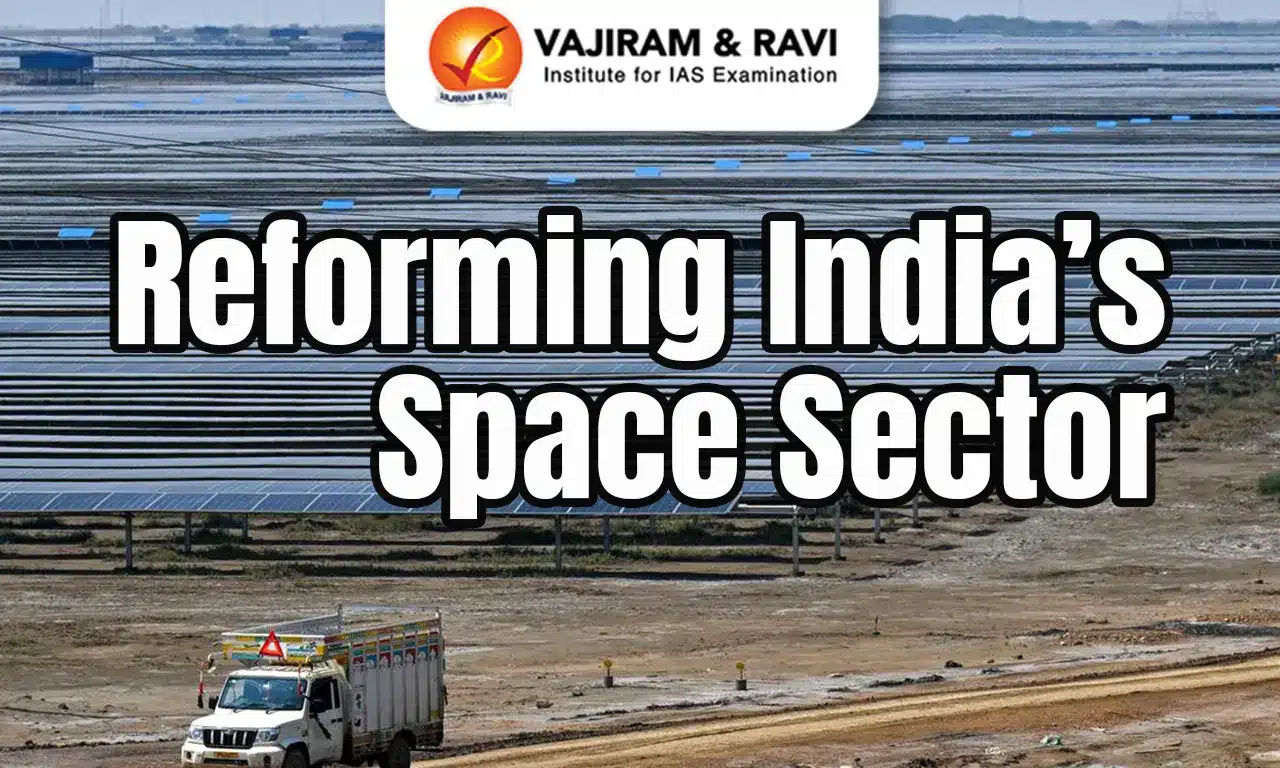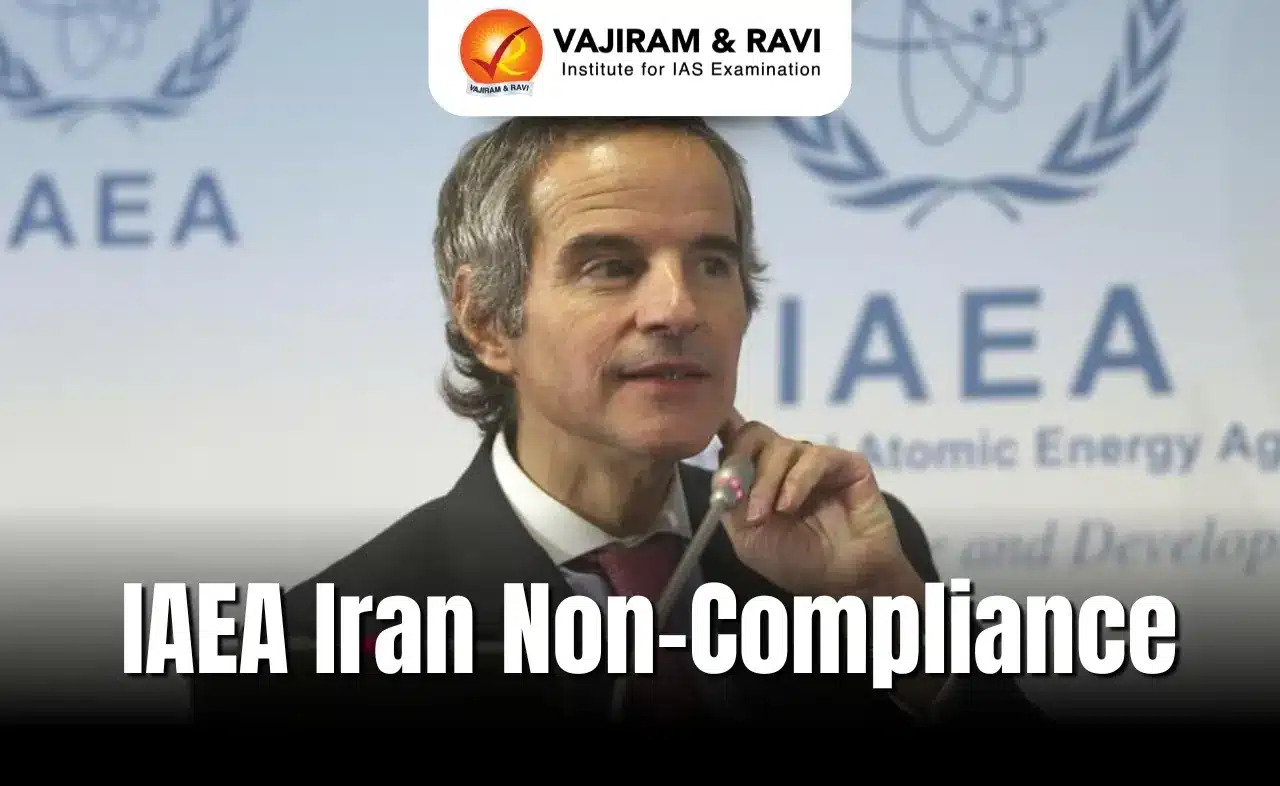Solar Cell Innovation Latest News
- Researchers at IIT Bombay have developed a high efficiency tandem solar cell with power conversion efficiency of approximately 30 per cent compared with around 20 per cent now.
Introduction
- In a landmark development for India’s renewable energy landscape, IIT Bombay has unveiled a next-generation solar cell technology that offers a substantial leap in both efficiency and affordability.
- The innovation, developed at the National Centre for Photovoltaic Research & Education (NCPRE), employs a tandem structure combining perovskite and silicon materials to create a solar cell that could significantly boost India’s clean energy capacity.
- With efficiency rates projected at nearly 30%, compared to the existing 20% in conventional silicon cells, this innovation may reduce the cost of solar power to as low as ₹1 per kilowatt-hour (kWh), making solar energy more accessible and sustainable.
Tandem Solar Cell Technology: A Game-Changer
- The newly developed technology is based on a four-terminal (4T) tandem solar cell design.
- In this architecture, a semi-transparent halide perovskite-based top cell is layered over a silicon-based bottom cell, allowing both to function independently.
- This configuration enhances power conversion efficiency and operational stability.
- Perovskite Advantage: Halide perovskites are recognized for their exceptional light absorption and low manufacturing cost. IIT Bombay’s breakthrough also addresses perovskite’s major drawback, its short lifespan, by extending its durability to around 10 years.
- Operational Durability: The tandem cell remains stable under heat and low-light conditions, improving its viability across diverse Indian climates.
- The research team explained that this solution not only improves energy output but also enables better land-use efficiency, which is critical for a densely populated country like India.
Potential Impact on Solar Energy Ecosystem
- Enhanced Efficiency & Cost Reduction
- Boosts power conversion efficiency by 25-30% over conventional technologies.
- Expected to bring down the cost of solar electricity to nearly ₹1 per kWh, a steep drop from the current ₹2.5-4 per unit.
- Reduced Import Dependence
- Currently, India heavily relies on China for solar-grade raw materials. Perovskite materials, which can be synthesized using locally available chemicals, will help reduce this dependency.
- Support for Green Hydrogen Initiatives
- The Maharashtra government and IIT Bombay are collaborating on a clean energy hub in Uran, with a focus on green hydrogen production using this new solar technology.
- High-efficiency tandem cells are vital for the photoelectrochemical splitting of water to produce hydrogen sustainably.
Commercialization and Industrial Collaboration
- The technology is being scaled up through ART-PV India Pvt. Ltd., a start-up incubated at IIT Bombay’s Society for Innovation and Entrepreneurship (SINE).
- It aims to provide a commercial wafer-size solution for tandem cells by December 2027 using indigenous manufacturing tools.
- Public Sector Engagement: The state government has directed MAHAGENCO, its power generation utility, to evaluate deployment and commercialization opportunities for the technology.
Strategic Importance for India’s Energy Future
- This development aligns with India’s long-term goals under the National Solar Mission and its Net Zero 2070 commitment.
- As land scarcity and material imports continue to challenge India’s renewable energy goals, high-efficiency indigenous solutions like this are critical to scaling up solar energy without proportionate increases in land or capital costs.
- Additionally, the ability to integrate these cells into rooftops, vehicles (VIPV), and buildings (BIPV) enhances their application versatility, pushing India closer to a decentralized and resilient energy grid.
Solar Cell Innovation by IIT Bombay FAQs
Q1. What is the efficiency of IIT Bombay’s new tandem solar cell?
Ans. The new solar cell has a power conversion efficiency of approximately 30%.
Q2. What makes this solar technology more efficient than existing ones?
Ans. It uses a 4-terminal tandem structure combining perovskite and silicon cells, enabling better light absorption and energy conversion.
Q3. How will this innovation reduce solar power costs?
Ans. It is expected to lower costs to around ₹1 per kWh due to higher efficiency and indigenous manufacturing.
Q4. What is the commercial timeline for this solar cell technology?
Ans. A complete commercial wafer-size solution is expected by December 2027 through ART-PV India Pvt. Ltd.
Q5. How does this technology support green hydrogen production?
Ans. The high open-circuit voltage of tandem cells makes them suitable for efficient solar-to-hydrogen conversion.
Source: IE
Last updated on June, 2025
→ UPSC Notification 2025 was released on 22nd January 2025.
→ UPSC Prelims Result 2025 is out now for the CSE held on 25 May 2025.
→ UPSC Prelims Question Paper 2025 and Unofficial Prelims Answer Key 2025 are available now.
→ UPSC Calendar 2026 is released on 15th May, 2025.
→ The UPSC Vacancy 2025 were released 1129, out of which 979 were for UPSC CSE and remaining 150 are for UPSC IFoS.
→ UPSC Mains 2025 will be conducted on 22nd August 2025.
→ UPSC Prelims 2026 will be conducted on 24th May, 2026 & UPSC Mains 2026 will be conducted on 21st August 2026.
→ The UPSC Selection Process is of 3 stages-Prelims, Mains and Interview.
→ UPSC Result 2024 is released with latest UPSC Marksheet 2024. Check Now!
→ UPSC Toppers List 2024 is released now. Shakti Dubey is UPSC AIR 1 2024 Topper.
→ Also check Best IAS Coaching in Delhi
Tags: mains articles solar cell innovation upsc current affairs upsc mains current affairs






















